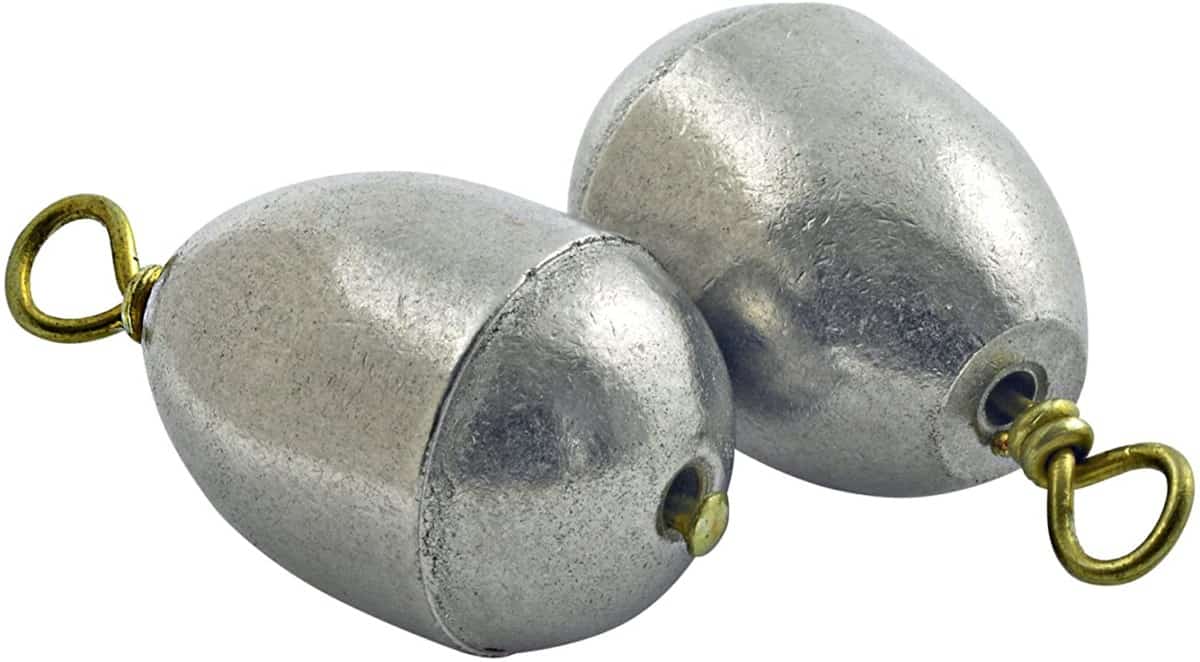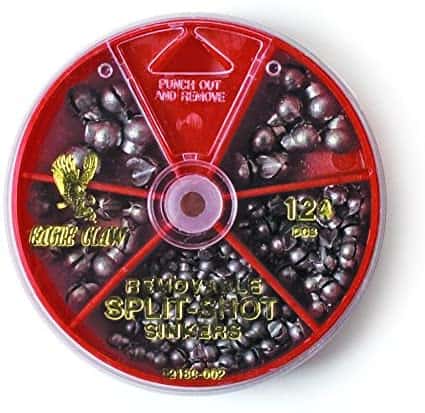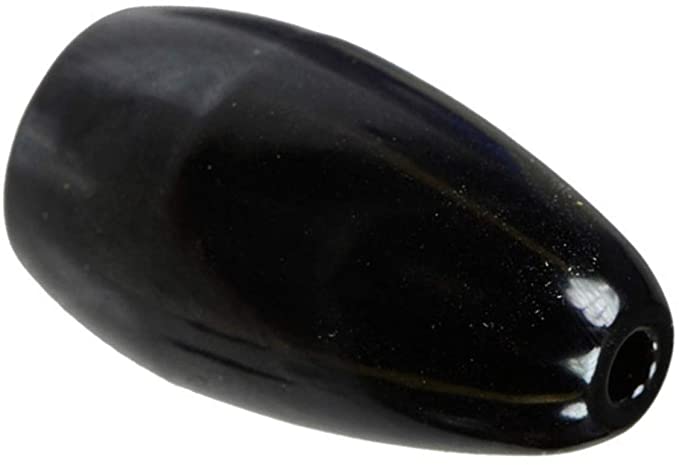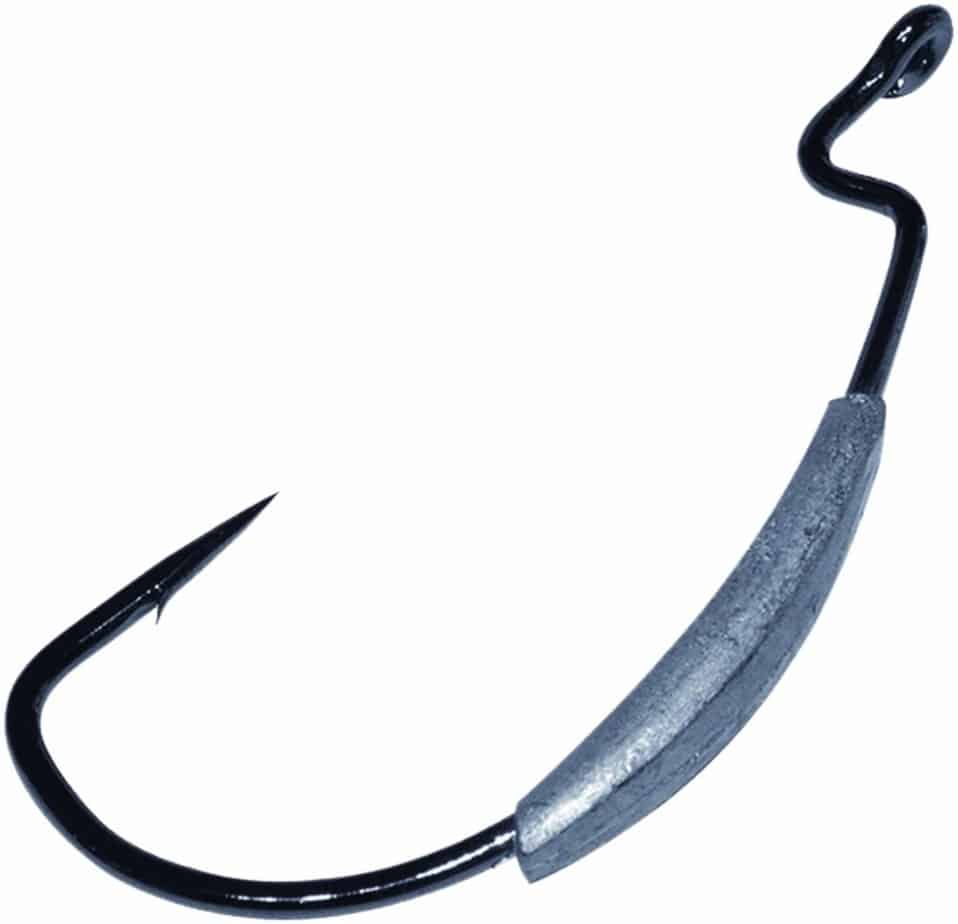
Using the wrong weight for bass fishing is one of the easiest ways to blow a perfect bite. Whether you’re flipping cover or dragging the bottom, your choice of weight changes everything. Here’s what you need to know before your next cast.
Terminal tackle choices are an integral part of a bass angler’s success. Having the right information to make fishing decisions can make or break your fishing day.
When choosing the weight you should use for bass fishing, consider wind, current, cover, fall rate, fish depth, and bottom contact—also, factor in the sinker style suitable for a particular bait. Most often, you’ll use the following weights for bass fishing: bullet head, drop shot, punch, insert, or hook weights.
Carefully considering the size, heaviness, and style should be one of the first steps when preparing for your day of bass fishing. You may have everything teed up perfectly. You’ve rigged up and chosen the perfect bait for the conditions. You are ready to go. But what if you’ve chosen the wrong weight?
Choosing the wrong weight could mean that your bait does not reach your intended target fast enough or could cause it to fall out of the strike zone of a bass too quickly and severely hamper your chances of catching fish. Below, you’ll see tips to help you put more fish in the boat by choosing the right type and size of weight for the occasion.
When to Use a Weight for Bass Fishing
Choosing the correct weights, also known as sinkers, is a critical component when trying to make the correct presentation in bass fishing. Weights are primarily used when fishing with soft plastics and rarely with hard baits or lures. When choosing the right weight, it is of utmost importance to consider the right style of weight and the heaviness of the sinker for a particular style of bass fishing.
Does Weight Really Matter for Bass Fishing?
“Weight a minute!” When most people consider what weight they should use for bass fishing, they underestimate the importance of their decision. However, understanding the value of weight selection is critical to your success as an angler. Carefully considering your weight’s proper size, style, and heaviness is an important key to your bass fishing success as you prepare for your day on the water.
Why Your Weight Choice Matters More Than You Think
Most anglers focus on lures and rods—but overlook how much weight affects everything from casting distance to fall rate to hook-up ratio. A 1/4 oz bullet weight might glide through grass perfectly, but that same setup in open water can feel lifeless. Likewise, a drop shot with the wrong sinker can spook finicky bass or never even hit the strike zone. The right weight doesn’t just keep your bait down—it makes it dance.
Start thinking of weights not as an accessory, but as a critical part of your presentation.
Sinker vs. Weight? What’s the Difference?
Many people use the term sinker when discussing live bait fishing while using the term weight when talking about artificial lures and baits. For this article, we’ll use them interchangeably and will predominantly discuss bass fishing using artificial lures and soft plastics.
What Are Fishing Weights Made From?
Most fishing weights are made from lead. However, there is a significant push to replace lead with other metals because of the environmental concerns related to using lead for fishing weights. Some lead alternatives include brass, steel, and tungsten. In addition, anglers should check their state regulations regarding the use of lead, as some states restrict or prohibit the use of lead for fishing.
Although more expensive, tungsten is gaining popularity and offers the advantage of being more dense and heavier, meaning you can get more pack for the punch. You can use a small profile tungsten weight compared to lead and get more weight out of the smaller profile.
What is the Real Purpose of a Weight for Bass Fishing?
Weights serve several purposes. First, weights make your bait heavier and easier to cast. Weights also control the rate of fall of your bait. The fall rate measures how fast your bait falls from the water’s surface to the bottom. A weight can also serve as a counterbalance, meaning it balances out how a bait moves through the water for baits like swim jigs and swimbaits. Finally, a weight can serve a particular purpose for certain baits. For example, punch baits need a weight heavy enough to penetrate thick cover. The weight is the tool that helps the bait punch through matted or heavy vegetation.
Do You Need a Weight for Bass Fishing?
You almost always need some sort of weight for bass fishing, although there are some exceptions. Many soft plastics can be fished with or without weight. Some examples of unweighted presentation include worms fished wacky-rigged, stick baits fished weightless, fluke fishing, and toad or speedworms skimmed across the surface.
The Best Weight Style for Bass Fishing? Your Guide.
Bass fishermen have hundreds, if not thousands, of baits and lures to choose from. Much of an angler’s success depends on their ability to combine the right lure and presentation based on a number of factors.
 Slip Sinkers are so-called because they have a hole in the middle of the weight, which allows the sinker to move freely or “slip” up and down your fishing line. They are typically used when fishing a worm either Texas or Carolina rigged. The most popular slip sinker for bass fishing is a bullet head weight aptly named because it resembles a small bullet. Bullet head weights have a point at the top, allowing them to slide through cover more easily without getting stuck. For an excellent tungsten bullet head weight, check out Reaction Tungsten options on Amazon.
Slip Sinkers are so-called because they have a hole in the middle of the weight, which allows the sinker to move freely or “slip” up and down your fishing line. They are typically used when fishing a worm either Texas or Carolina rigged. The most popular slip sinker for bass fishing is a bullet head weight aptly named because it resembles a small bullet. Bullet head weights have a point at the top, allowing them to slide through cover more easily without getting stuck. For an excellent tungsten bullet head weight, check out Reaction Tungsten options on Amazon.
 Bell Sinkers look like small bells and are used less frequently but are still worth mentioning as they are used for bass fishing to sit on the bottom while suspending a live or artificial bait above the weight and further up your line in the water column. To check out a great bell sinker for bass fishing, click here to visit Amazon.
Bell Sinkers look like small bells and are used less frequently but are still worth mentioning as they are used for bass fishing to sit on the bottom while suspending a live or artificial bait above the weight and further up your line in the water column. To check out a great bell sinker for bass fishing, click here to visit Amazon.
 Cylinder Style weights Cylinder sinkers may be a better fit when fishing a drop shot or other technique as they are less bulky, meaning fewer snags in rocks, grass, timber, or other bottom cover. In addition, many manufacturers make a cylinder-style sinker designed explicitly for drop shot fishing because it is made to break away from the line easily when it gets snagged. Click here to check Amazon for drop shot weight options.
Cylinder Style weights Cylinder sinkers may be a better fit when fishing a drop shot or other technique as they are less bulky, meaning fewer snags in rocks, grass, timber, or other bottom cover. In addition, many manufacturers make a cylinder-style sinker designed explicitly for drop shot fishing because it is made to break away from the line easily when it gets snagged. Click here to check Amazon for drop shot weight options.
 Split-Shot sinkers are small, round, ball-like sinkers with a slit down one side. The line slides into the groove, then the sinker is pinched onto the line. They can resemble small BBs or can be much larger as well. Although split shots are more common with live bait bass fishing, they can add small amounts of conspicuous weight to many artificial lures and baits. A
Split-Shot sinkers are small, round, ball-like sinkers with a slit down one side. The line slides into the groove, then the sinker is pinched onto the line. They can resemble small BBs or can be much larger as well. Although split shots are more common with live bait bass fishing, they can add small amounts of conspicuous weight to many artificial lures and baits. A
 Punch Weights These weights are typically used coupled with a punch bait (jig) to punch through heavy mats, vegetation, or other cover. They are also slip sinkers (often “pegged” with bobber stops) but deserve a separate category because of their popularity. Many punch weights are made of tungsten which allows them to be made in smaller profiles than lead. Visit Amazon to see Eco Pro’s line of punching weights.
Punch Weights These weights are typically used coupled with a punch bait (jig) to punch through heavy mats, vegetation, or other cover. They are also slip sinkers (often “pegged” with bobber stops) but deserve a separate category because of their popularity. Many punch weights are made of tungsten which allows them to be made in smaller profiles than lead. Visit Amazon to see Eco Pro’s line of punching weights.
 Insert Weights Also known as nail weights, insert weights resemble a small nails and are primarily used for soft plastic fishing when finesse fishing for bass. The benefit of these sinkers is that they are a more “covert” offering than a traditional sinker because the nail is hidden in the body of the plastic bait, making them particularly useful in clear water settings. See Amazon for several options, including Reaction Tackle’s nail weight.
Insert Weights Also known as nail weights, insert weights resemble a small nails and are primarily used for soft plastic fishing when finesse fishing for bass. The benefit of these sinkers is that they are a more “covert” offering than a traditional sinker because the nail is hidden in the body of the plastic bait, making them particularly useful in clear water settings. See Amazon for several options, including Reaction Tackle’s nail weight.
 Hook Weights Hook weights are weights also made to attach by pinching; however, the weight pinches onto the hook instead of the line. Many baits swim better (more lifelike) when a hook weight is used as opposed to a traditional sinker. Gamakatsu, carried by Amazon, is well-known for its super-sharp hook weights.
Hook Weights Hook weights are weights also made to attach by pinching; however, the weight pinches onto the hook instead of the line. Many baits swim better (more lifelike) when a hook weight is used as opposed to a traditional sinker. Gamakatsu, carried by Amazon, is well-known for its super-sharp hook weights.
How Heavy Should the Weight Be for Bass Fishing?
Equally important as style is sinker size. Weighs can range from 1/64 ounces to 2 ½ ounces for almost all bass fishing needs. The decision on how heavy your weight should be depends on several factors, including depth, wind, cover, fall rate, and bottom contact.
- Fish Depth The ideal weight directly correlates to the depth you expect to have your bait encounter bass. This concept is pretty straightforward. For shallow water, you’ll need less weight to get your bait into the strike zone of a bass. You may be able to get there with a ⅛ or 3/16 ounce weight in water up to 7 or 8 feet, whereas you may need a larger weight for water ranging from 8 to 20 feet (¼ ounce to ⅜ ounce).
- Wind and Current More wind means more resistance as your bait enters the water. As wind speed increases, you’ll need to add more weight to compensate for the increased resistance. The same can be said for current. A stronger current means more movement on your bait. With more current, anglers should consider a heavier weight.
- Cover Fishing vegetation requires heavier weights, generally speaking. Punching through thick mats usually requires a much heavier weight (a punch weight is typically between 1 and 2 ounces). The heavier weight helps you penetrate the cover so your bait can get down to the weighted bass. Ideally, you want a weight heavy enough to get through the cover but not so heavy that it penetrates cover and falls too quickly.
- Fall Rate Fishing with finesse applications where you are looking for a slower fall rate may mean that you want a very light weight like a 1/64 or 1/32 split shot weight to allow your bait to cast more easily and fall more freely. Additionally, fall rate is an important consideration when fishing a Texas rigged style soft plastic worm.
- Bottom Contact For some baits, it is essential that you maintain contact with the bottom. If you are fishing a bait where the bottom is important, choose a weight that is heavy enough to maintain bottom contact. You may have to use trial and error at times to find the right weight to maintain bottom contact while not getting stuck or snagged.
KEY CONCEPT Choose the lightest weight you can get away with and still fish your particular bait effectively. Lighter weights help you feel your bait better, allowing you to detect bites more easily.
Match Your Weight to the Right Technique
Different weights serve different roles, and your success often comes down to matching them with the right technique. When fishing shallow cover like grass or pads, a heavier punch weight helps your bait break through cleanly. That setup pairs perfectly with picks from the Top 15 Shallow Water Bass Lures, especially when bass are buried in thick vegetation. If you are targeting spooky bass in clear water, a drop shot rig with a lighter weight can keep your presentation natural and subtle. Combine that with something from The 12 Best Sight Fishing Baits for Bass to keep your bait suspended just right in the strike zone.
Enjoy these tips for choosing the right weight for bass fishing and fish on!
Affiliate Disclosure:
Some of the links in this post may be affiliate links. If you make a purchase through them, we may earn a small commission at no extra cost to you.
